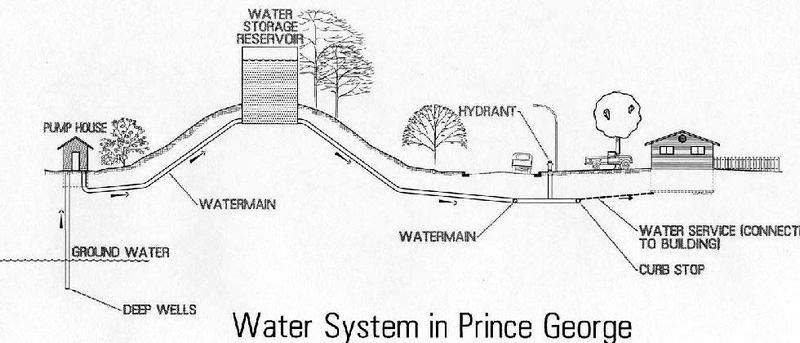City tap water passes most taste tests, and according to Northern Health and its drinking water testing division, it's about as good as you can get.
But don't take it for granted. We could be just one industrial accident away from losing that life-giving commodity.
"The water quality is really optimal, as good as you're likely to find in most places," said Bruce Gont, the drinking water leader for Northern Health.
"The advantage we have is, it's groundwater for the most part, and its fairly young water associated with the Nechako River. This water system we have is a huge asset for the city and it saves us having to go into the treatment like Dawson Creek would have to go through.
"But it's also a vulnerable source. The aquifers it's drawn from could be knocked out of action on a moment's notice, and maybe permanently, by an environmental or man-made event."
Spills like the one near the Cameron Street bridge in 1997 when a tanker overturned and dumped diesel fuel onto the bank of the Nechako River, are of major concern to Northern Health. Although that spill was largely contained by environmental cleanup crews, it was close enough to the drinking water aquifers to sound the alarm bells.
"If you have a hydrocarbon like that in the water it can either make it unsafe or unpalatable to be used and it could be a permanent problem," said Gont. "Then you can kiss goodbye to that resource."
With several industrial businesses in the city that handle hazardous material located near the rivers, that increases the risk of an accident. One other incident in March 2000 at the Canadian Helicopters base west of the city on Otway Road resulted in a 17,000-litre leak of aviation fuel from a storage tank. Although most of the fuel was dug out of the ground and hauled away, some of it did get into the water table.
"That was far enough away and they don't feel it impacted the present city wells, but these kind of events and the transportation system, either by truck or by rail, put the water system at jeopardy," Gont said.
"The city knows about this and has been working on a process to help protect those sources through monitoring and well-head protection, so these valuable sources hopefully will not be wrecked for future use. The alternative is to pull the water directly out of the Nechako, and that would call for a full treatment works.
"We have a fine water system, and it's reliable, but we need to respect and safeguard our supply, because it could be made vulnerable through carelessness."
The city is required to collect water samples daily and submit those samples to Northern Health for testing and our water does meet or exceed Canadian drinking water quality guidelines.
In 1997, the city's water was used as the negative control in a UBC/Ministry of Health comparative study on giardia and cryptosporidia, two types of cyst-like parasites that survive in cold water and cause gastrointestinal diseases. Because so few of those organisms commonly exist in our water, our H2O was the measuring stick against other cities which have that problem.
"The cool thing about that was, we had a sample shipped out almost every week during '97, at least 50 samples, and in all those samples, after running 4,000 litres though a filter every day, not one cyst was determined in Prince George's water," said Gont.
"It doesn't mean that there were no cysts, but the filtration of the aquifer is sufficient that we are really protected against giardia and cryptosporidia. They are building a big plant in Vancouver to achieve the same water quality we already enjoy here. It's a huge advantage for us."



